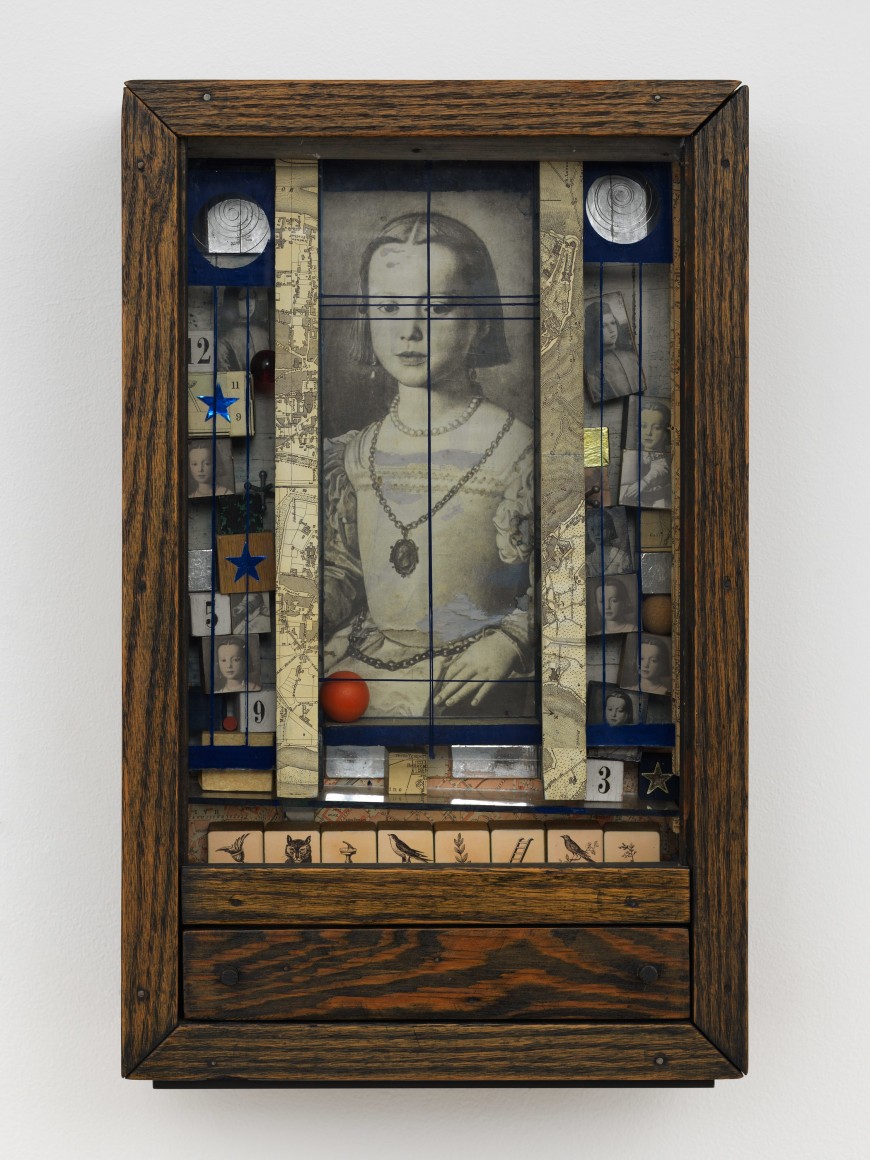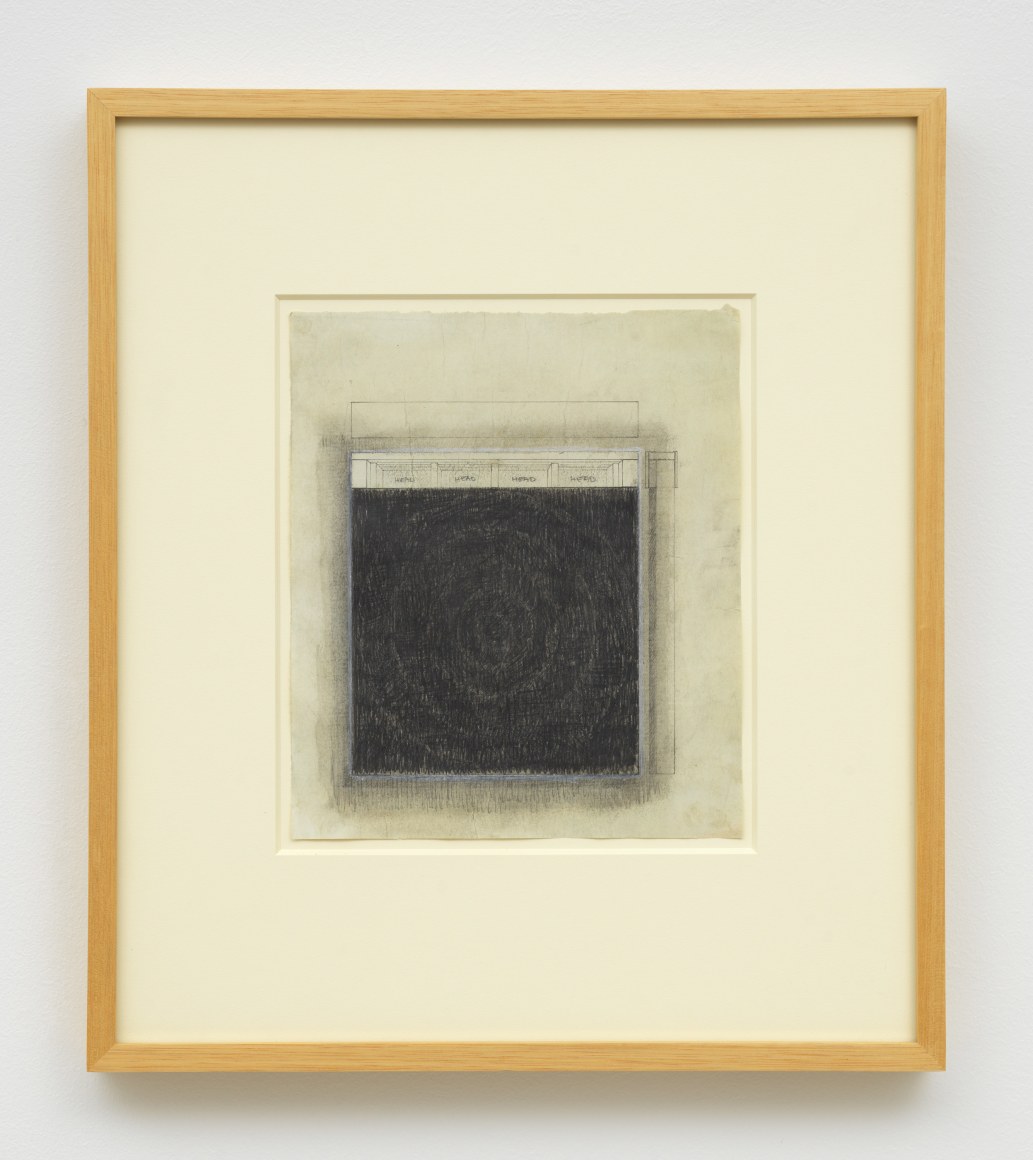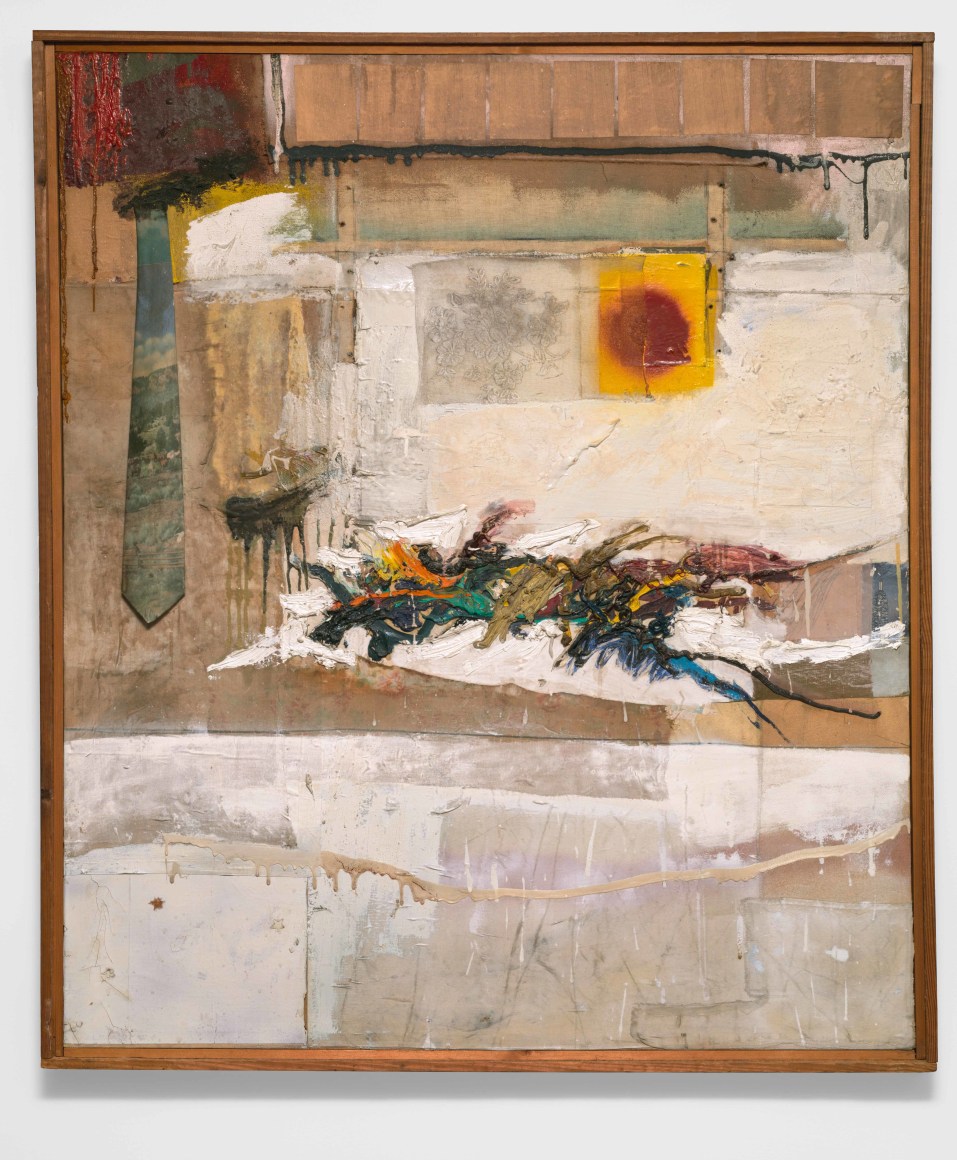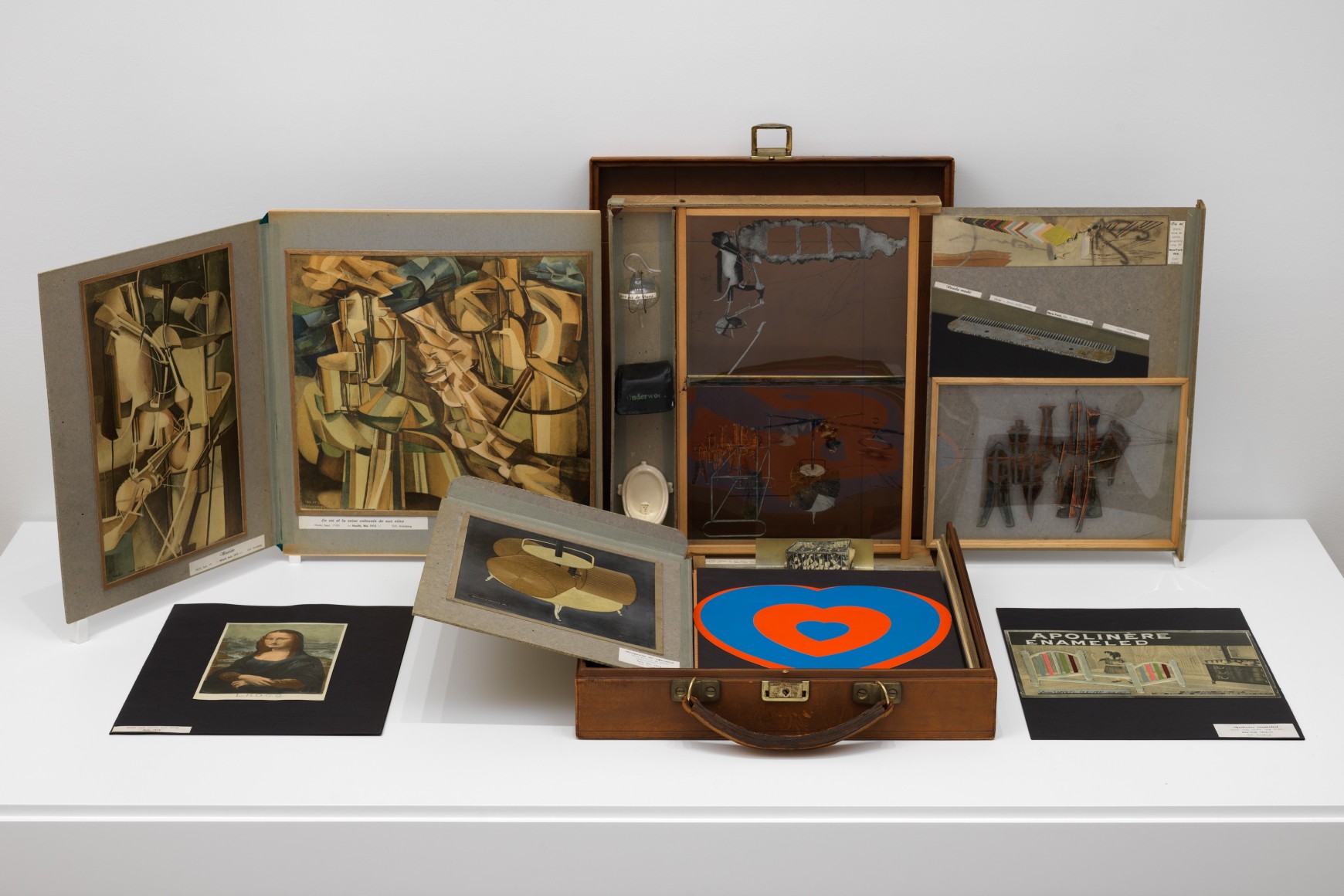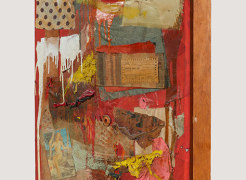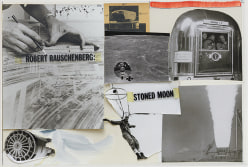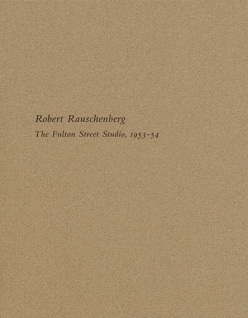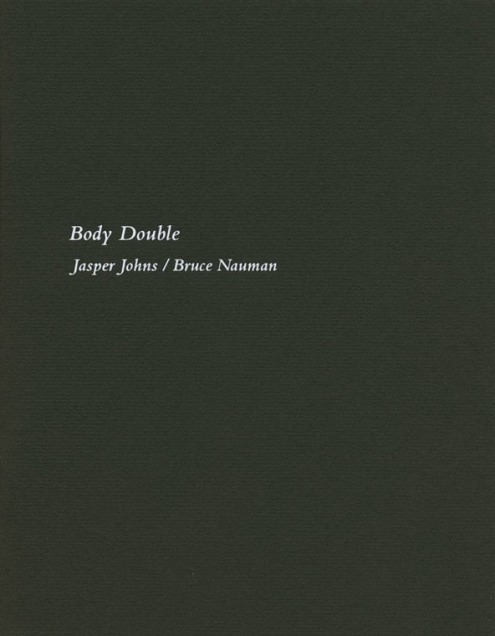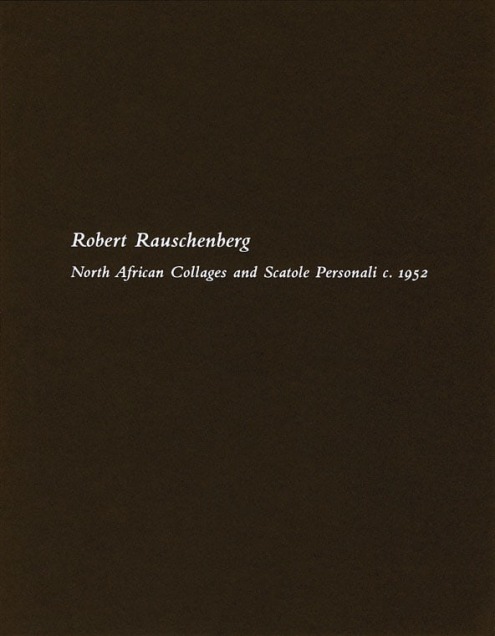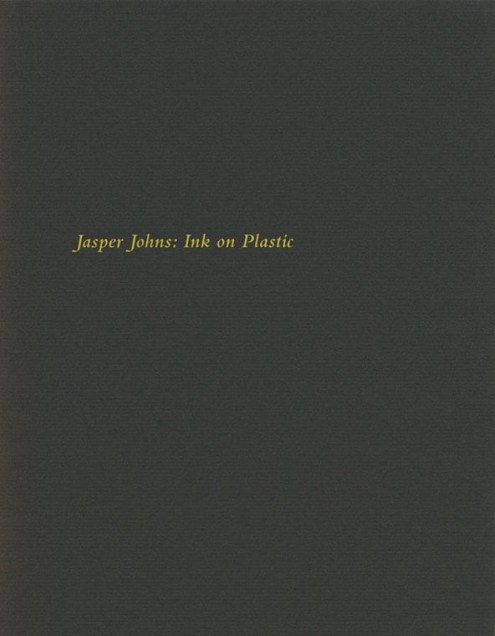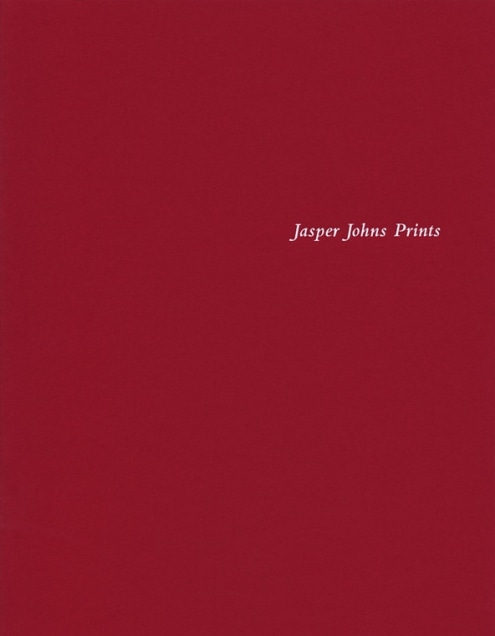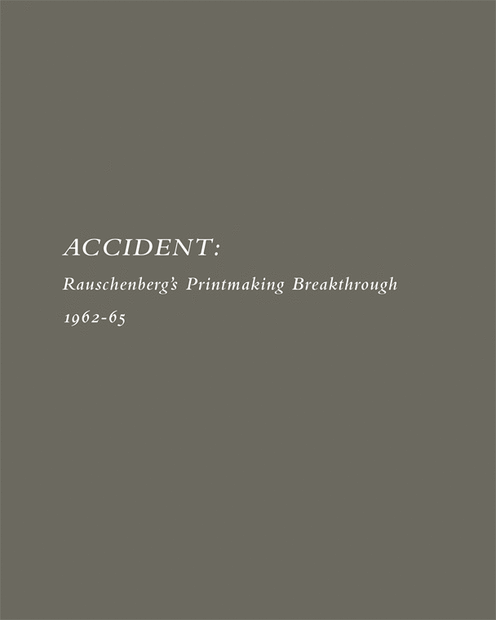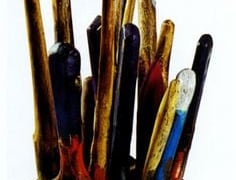
Craig F. Starr Gallery is pleased to present Souvenirs: Cornell Duchamp Johns Rauschenberg, an exhibition which brings together four artistic giants of the twentieth and twenty-first centuries. While Johns continues working today, the influence of Cornell, Duchamp, and Rauschenberg remains pervasive in contemporary art even in their absence. Souvenirs distills their rich and myriad connections down to just six exemplary masterworks—all on loan from prestigious private and public collections—which are now on view in a single intimate space. Focusing on the theme, process, and function of the souvenir, the exhibition puts these carefully selected works into close correspondence.
A souvenir preserves, but is also a sign of absence, loss, or some prior existence. Like the medium of collage, a souvenir also involves an operation of delay and displacement, having been torn from one time, place, and context to be stitched into another. This is evident in Rauschenberg’s collage, Untitled [Mona Lisa], c. 1952, which combines various printed paper and fabric scraps collected while traveling in Europe and North Africa with Cy Twombly in late 1952 and early 1953. Or as John Cage once described Johns’s work, the souvenir similarly functions not as “either / or” but rather “both / and,” as a nexus through which temporal and physical distance paradoxically collapse into a single object or moment. This peculiar sensation is repeatedly explored by Johns in particular, especially through his use of optical illusions, which are especially notable in his large-scale drawing Spring, 1986.
While the personal and artistic relationship between Johns and Rauschenberg, as well as their mutual friendship with Duchamp, are well known, the connection between Cornell and Duchamp is not as publicized. The two met in New York in 1933, establishing their friendship through letters, postcards, lunches, visits, gallery encounters, and exchanges of gifts, later collaborating on Duchamp’s Boîte-en-valise, with Cornell helping with the assembly of Series B between 1942-54.
At the heart of Cornell’s exquisite construction, Untitled (Medici Princess), 1948, a photographic reproduction of Agnolo Bronzino’s Portrait of Bia de’ Medici, c. 1542 sits in splendor, the image endowed with new life as a souvenir both of Bronzino’s painting and of his original sitter. She is echoed in the center of Spring by Johns’s own traced shadow, as well as by the shadow of his young godson below. Like the shadow in the Johns, presence is again signified through absence in Rauschenberg’s Rhyme, as suggested by an empty necktie hanging from the canvas. The work’s title also implies how likeness and presence can be signified by means of visual, or textual, resemblance or replacement. This is again evident in Johns’s dense and inscrutable graphite and pastel drawing, Target with Four Faces, 1955. The drawing is itself a souvenir of Johns’s now-iconic painting in MoMA’s collection, and one of many works exploring the same theme. In the place of the plaster casts from the painting, Johns has substituted the generic word “HEAD” in each of the four boxes along the top of the drawing, in a typical fashion, replacing the visual or iconic with the textual. Here verbal presence signifies visual absence. While seemingly at odds formally with other works in the exhibition, it is important to remember the origin of much of Johns’s imagery seen here, as well as that of the other three artists: the penny arcade.
Fairfield Porter, writing about Cornell in 1966, conveys a sensibility that could apply equally to all four artists: “His content has something that has not been seen in works of visual art since the Renaissance…which is an inclusion within itself of references to the highest reaches of the human spirit, without pedantry, artistically and imaginatively. However, the Renaissance was triumphant and extrovertive, while Cornell is on the contrary introvertive and melancholy, and includes the spectator in his awareness.” The traditional conceit that the artist conveys a predetermined expression or message is short circuited in these six works, and the viewer is drawn in as an active participant. In this sense, these artists all betray their thoroughly modern sensibility.

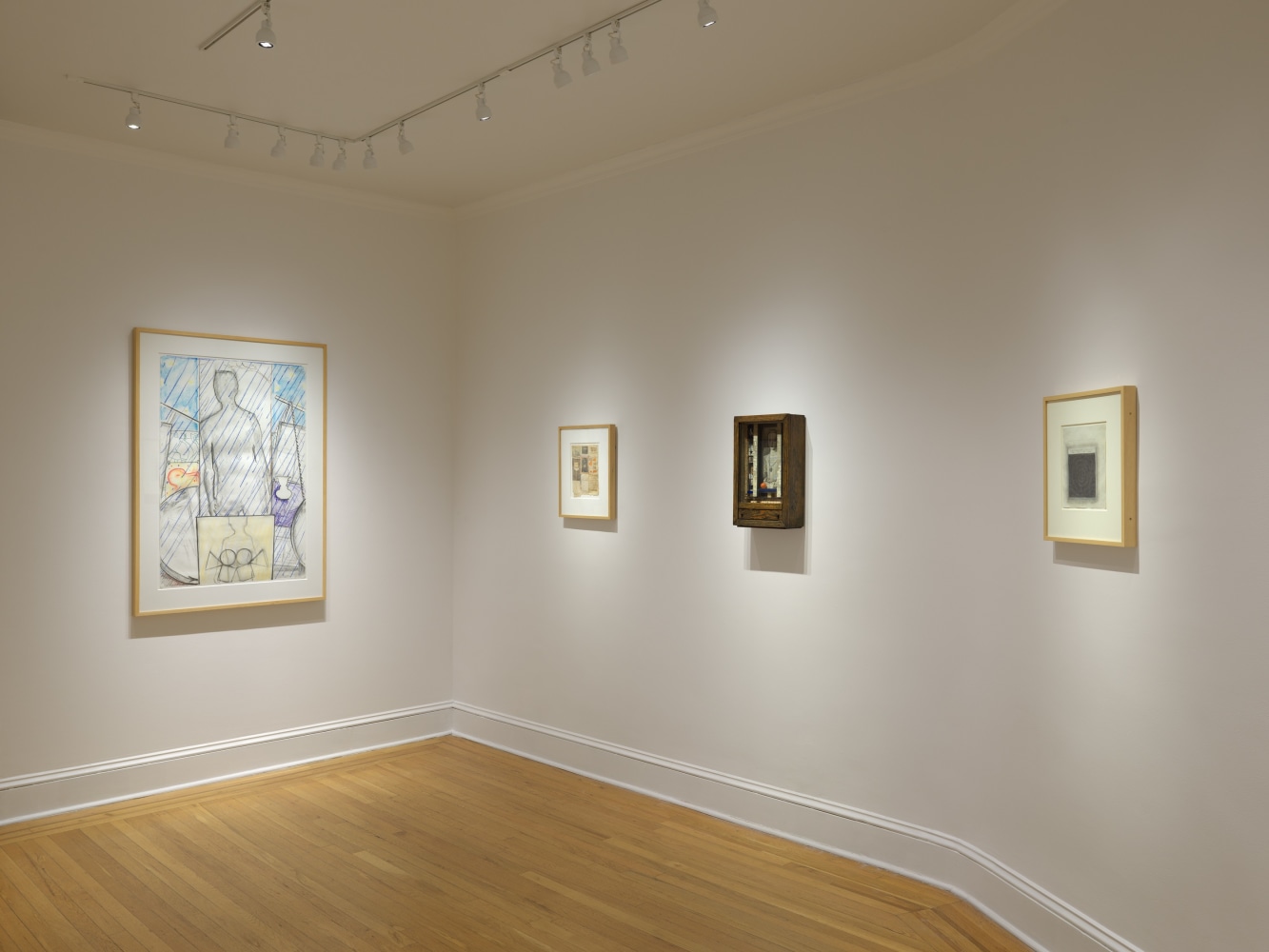
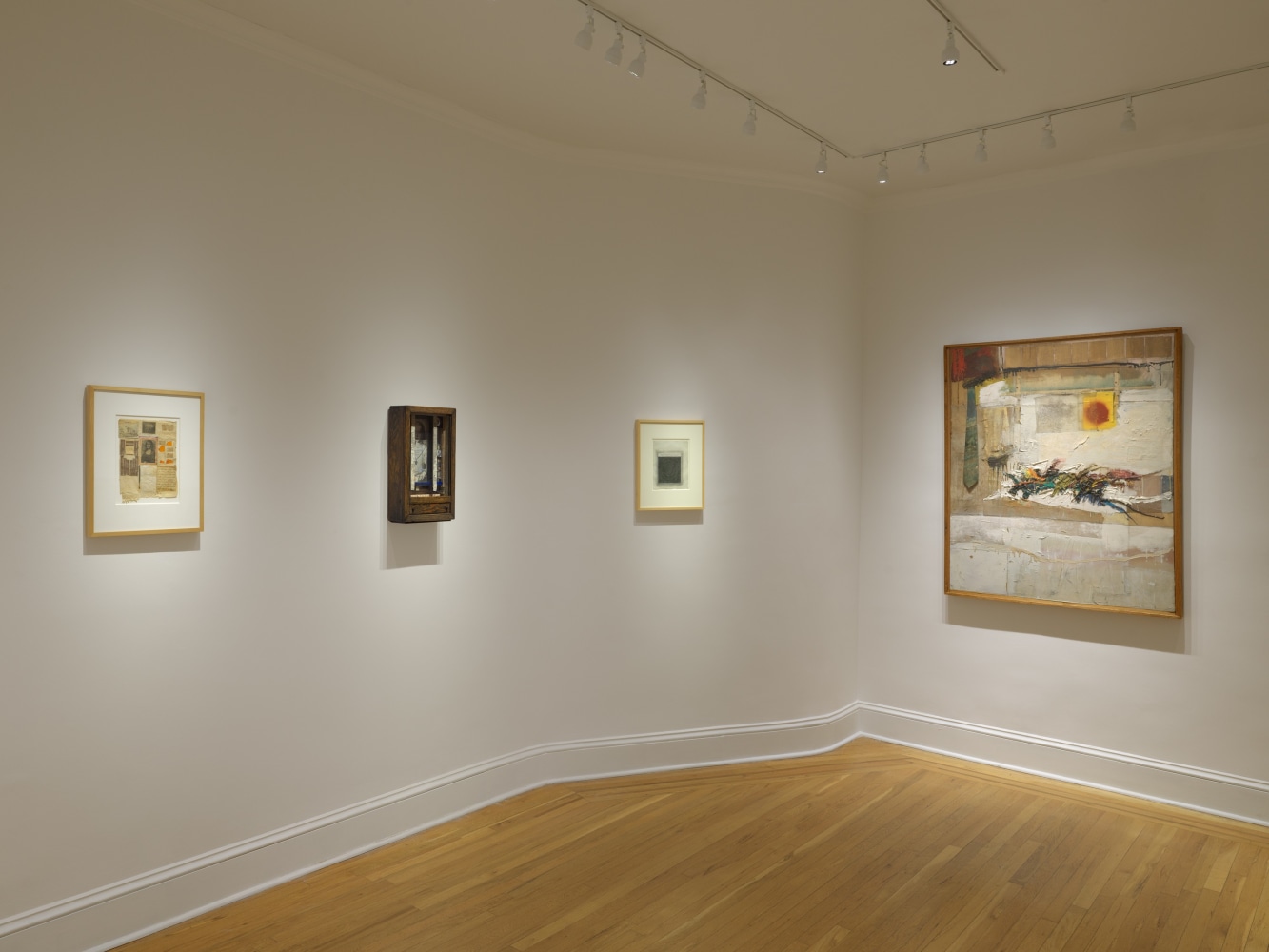

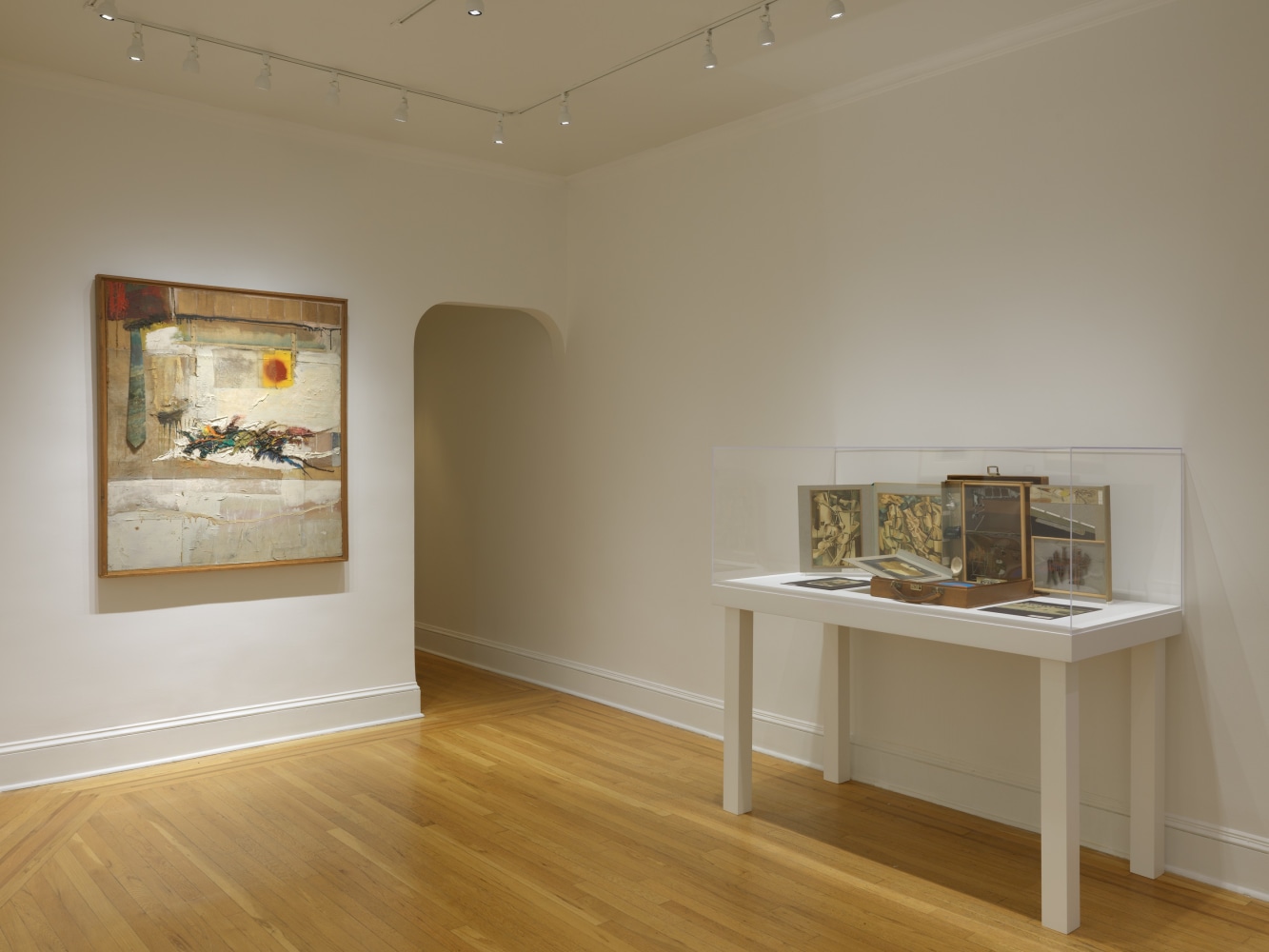
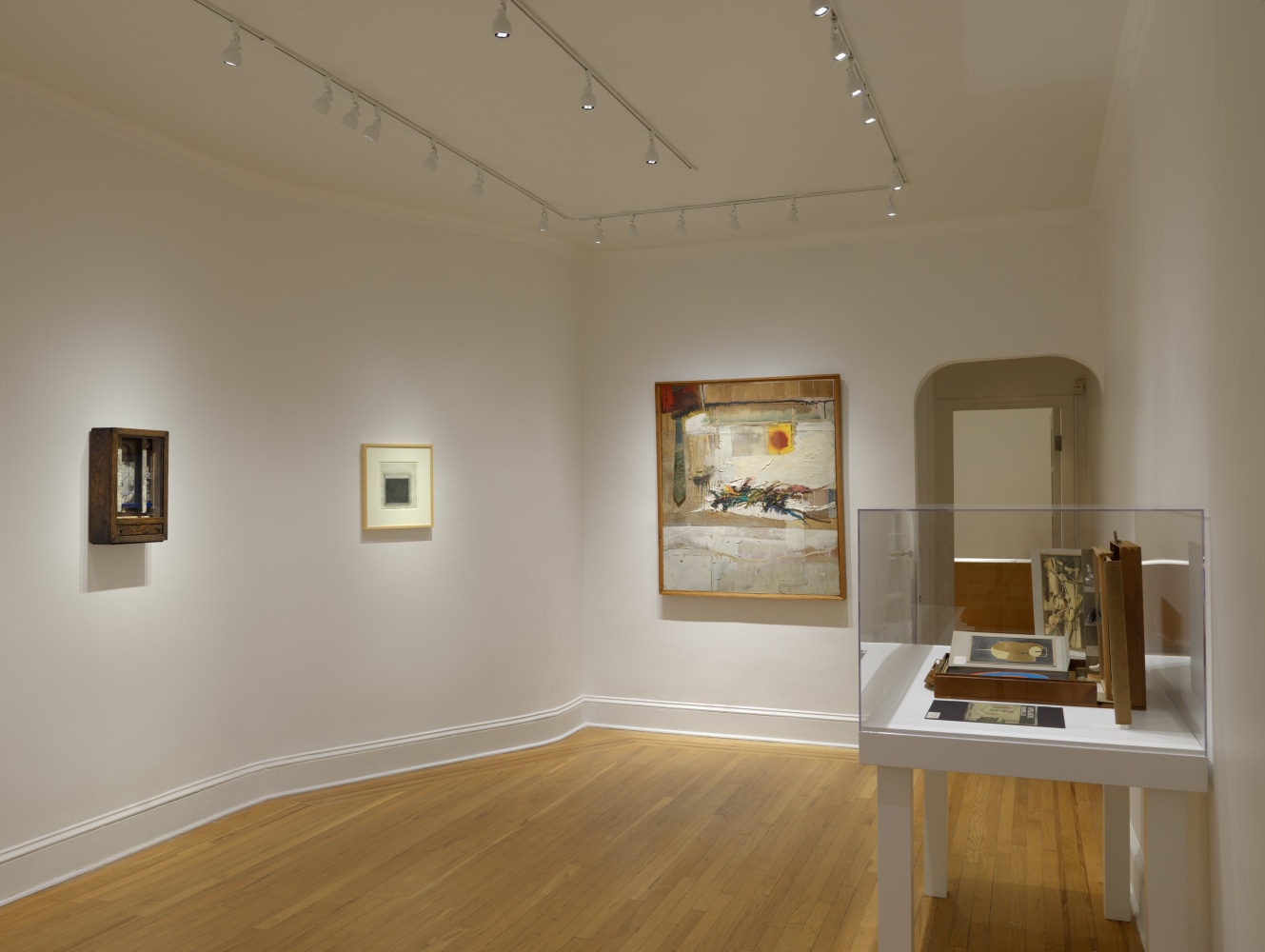



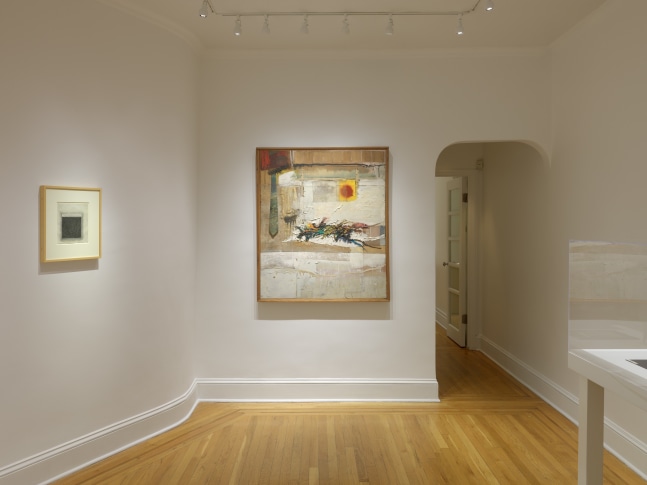


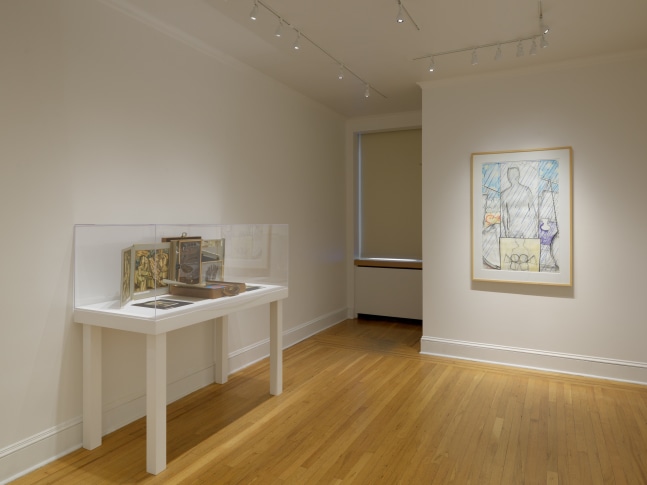

![Robert Rauschenberg Untitled [Mona Lisa], c. 1952](https://img.artlogic.net/w_2020,h_1160,c_limit/exhibit-e/55e4b0a56aa72c41556a3ec2/1ef98c763bc4abface6f51160458a4ff.jpeg)
